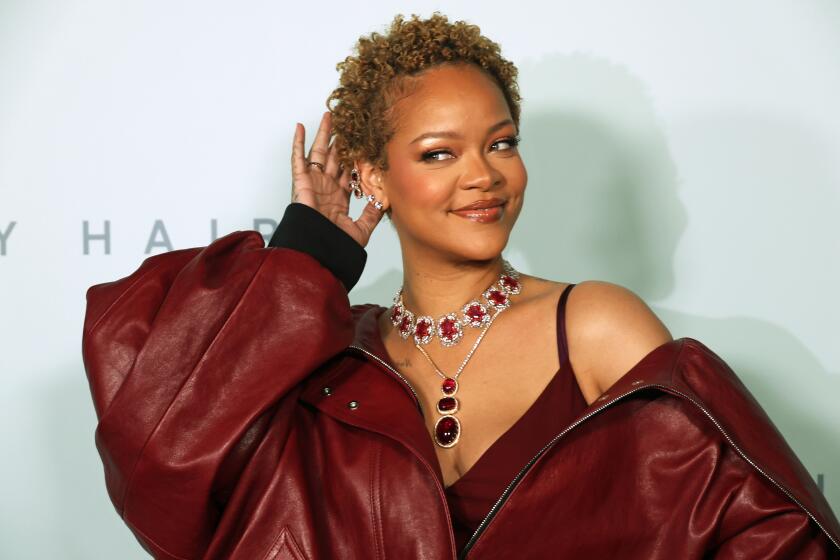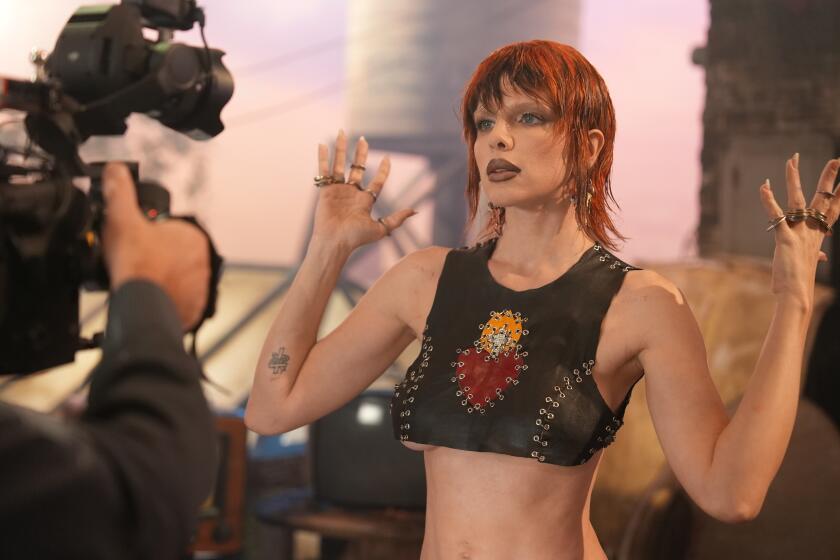The pulse of history can be counted...
The pulse of history can be counted by many clocks: by the grand hour-hand sweep of economics or law or warfare, but it’s the ticking of the second hand that can be the most telling, human history as chronicled by food, by funerary practices, by fashion.
Fashion-as-history is not found in the single and singular garment, say, the necktie Monica gave to Bill, but in the rage for the rags du jour.
--In the early 19th century women who dressed in flimsy and revealing First Empire gowns, whose daughters would grow up to be so hysterically modest as to put skirts on the shockingly bare legs of pianos.
--In the new bourgeoisie who flaunted not only purity but prosperity with white wedding gowns that signaled, “My owner is so well off she can buy a dress she will wear only once.”
--In the dismantled fences of “class” found in the up-marketing of jeans from the workingman’s garb to the style of the man of parts . . . in the 19th century “discovery” of childhood and the innovation of children’s clothes as something other than scaled-down adult garb . . . in the do-si-do between hemlines and the Dow Jones average.
My friend, the admirable Norman Corwin, said he knew that he was in a very different place when he stepped off the plane in L.A. from New York in 1940 to be greeted by executives wearing not the Big Apple uniform of three-piece suits and wingtips but California full-dress: sports coats and slip-ons!
Ritual and symbolism, class and custom are knitted into fashion’s fabric as surely as microfibers and Shetland wool. If it were not so, millions would not be spent selling it, or billions buying it.
And a woman from a designing family, a woman who knew how to say “crepe de chine” and “peau de soie” before I knew how to say “papa and mama,” who has spent her years designing clothes and collecting them, says the history and the semiotics of fashion, especially in this most forward-leaning of cities, merit a museum of their own.
*
Irene Kasmer began designing for the youth market almost before there was one; except for the irrational exuberances of the 1920s, young people had generally spent their teen years waiting to grow into a suit like dad’s or an evening dress like mom’s.
Kasmer was a teenager herself when she came to Los Angeles in 1948, when Dior’s “New Look” was riding high, and a few surfer boys and girls were riding longboards. The swim-and-sport giants like Cole and Catalina were gathering momentum; postwar Los Angeles was the city of the new: suburbs, drive-in movies and churches, backyard pools, young and casual rather than adult and sophisticated.
In the summer before John F. Kennedy was assassinated, a Times fashion writer described Kasmer as an explorer in “the uncharted territory of teenage tastes,” the uncharted territory being the whole notion of “junior” clothes and junior sizes. Her styles, like her patented hip-huggers in 1958, made the pages of Seventeen magazine. It was to Kasmer that Dupont brought its first 10 yards of Lycra in 1959--a periwinkle blue, she remembers, from which she made pants and a vest.
Whatever she was selling at the moment, the style that was never out of season, as far as she was concerned, was Los Angeles and California. “I always pushed California. For a while, I didn’t even show [her line] any other places. My label said ‘Irene Kasmer Inc., California.’ People laughed, I pushed it so hard.”
For years she had a hand in producing a spring show of L.A. designers for out-of-state buyers and writers, but she came to realize that “they come to party once a year, have a few drinks, see a few clothes, leave town and forget us.”
She said so finally to Mayor Tom Bradley, who had appointed her to one of his advisory committees. “He said, ‘What do you want, Irene?’ I said, ‘A museum, to document and display the past, present and future of the California fashion industry. ‘ He said, ‘Fabulous.’ ”
Even with mayoral interest, these things are never easy. There was the tax-exempt status, fund-raising, finding a site. Her hope of putting the Museum of Fashion Designers and Creators in the Julia Morgan-designed Herald Examiner building had the support of the Community Redevelopment Agency, and it even appeared on the books of the strategic plan for downtown.
But here it is, the end of the ‘90s, L.A.’s fashion industry an unchallenged titan on the runway, and still no museum. Kasmer’s collection of frocks and beach clothes and tailleur suits and movie couture is still looking for a temporary home and, one day, a permanent site.
And yet . . . anyone who has spent her life in fashion knows that everything cycles around again, even the appetite for museums.
*
Kasmer has boxes filled with the design history of Southern California. In a drawer at home I have my own reliquary--a pile of labels from the lost couturiers of Los Angeles, vanished marques such as Bullock’s San Fernando Valley, Patricia’s of Santa Ana, Bundi’s of West Hollywood, the Jewel Box at the Ambassador Hotel, Woodruffs Men’s Store in Alhambra, W. Salazar Sunset Strip. It is touching in an age when, as Kasmer says, fashion has gone “very global,” to have these aides-memoire dropped, forgotten along the pathway of the evolution of style--from corner shops that clothed the neighborhood to a city that dresses the world.
Irene Kasmer can be reached at (213) 622-1046.
*
Patt Morrison’s e-mail address is patt.morrison@latimes.com




